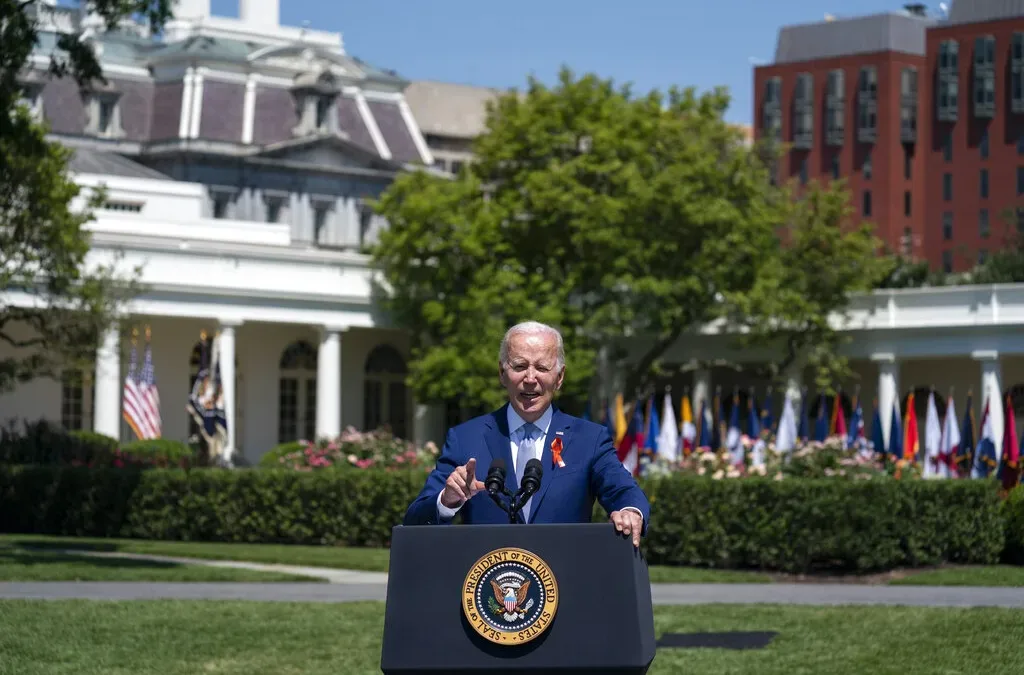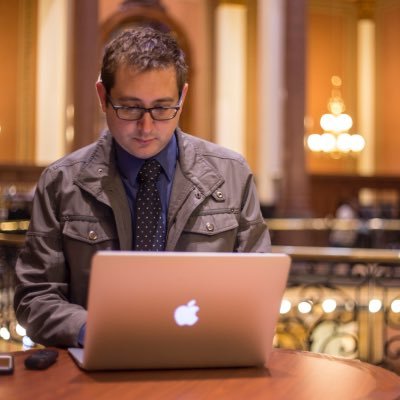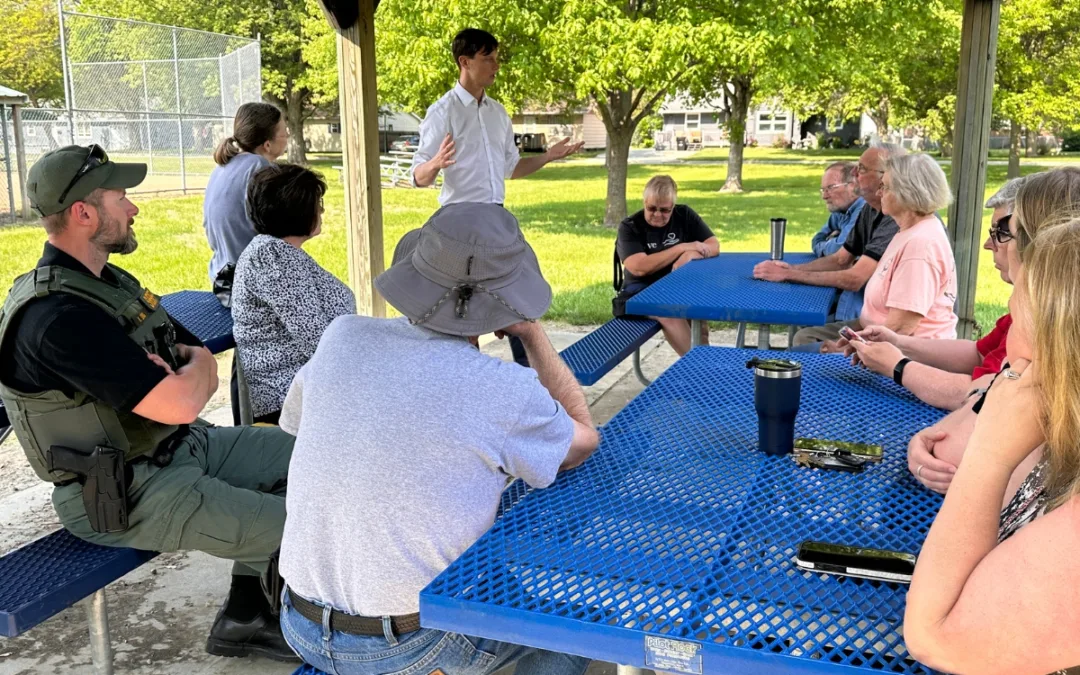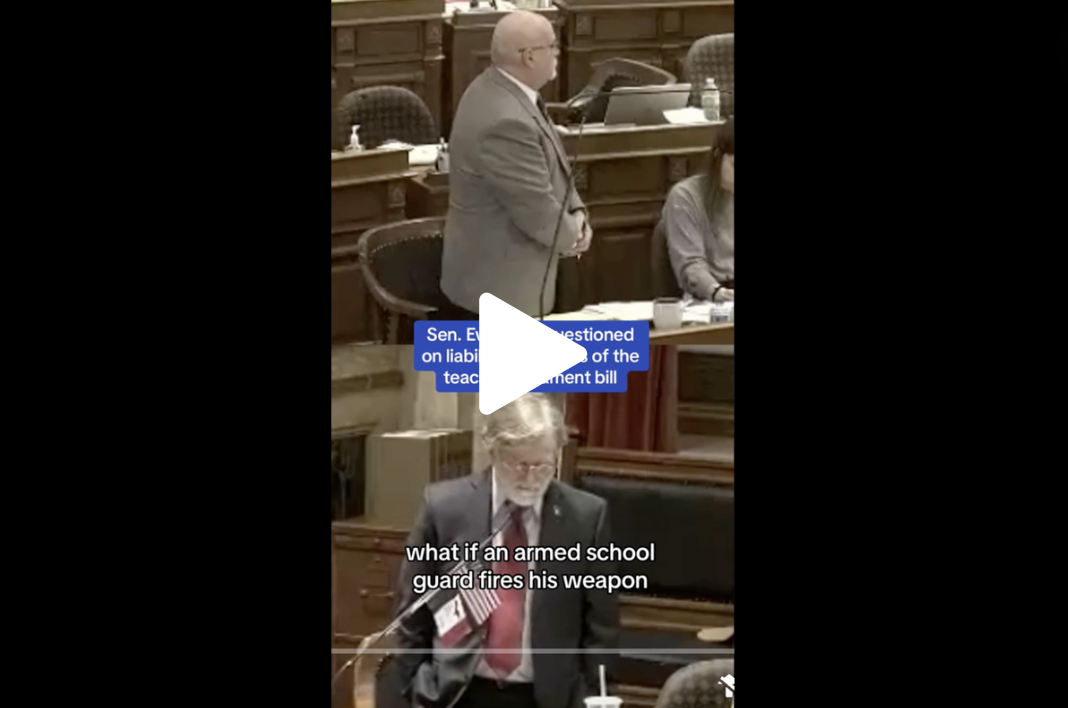Climate change activists cheered last week as the Paris Climate summit produced a pact between 195 countries that aimed to reduce greenhouse gases emitted into the atmosphere. But they were also cognizant of just how long it had taken the world to get to this point, years and years after the need for action had become abundantly clear. And in America, especially during campaign season, the follow-through on those climate plans can seem frustratingly difficult to achieve.
However, visit a college campus, particularly an Iowa college campus, and you’ll see a whole other world. Climate change in recent years has emerged as a top three – if not the very top – issue for young people. In much the same way gay rights became nearly universally supported on campuses in the last decade, so too now has climate change. And the activism surrounding the topic has taken off, with many Iowa campus climate groups pulling in more students than campus presidential candidate organizations.
Large numbers of young people organizing around climate change issues in Iowa is obviously very important to the movement with the Iowa Caucus in town. Few candidates get through a town hall forum without being asked about clean energy or the climate. But what’s happening on college campuses in Iowa and around the nation will mean even more for the long-term viability and success of climate action as these young people grow up and become more active voters.
Starting Line spoke to a number of students, professors and staffers from climate groups over the past few weeks to take a more in-depth look into this campus movement.
Climate Concerns Rise To The Top
“You will rarely find Americans under 30 who deny that climate change is real, or thinks their government shouldn’t be doing something about it,” Democratic presidential candidate Martin O’Malley often says in his speeches as a means of encouragement about the future.
And he’s right. A multitude of polls over the years have shown young people overwhelming believe climate change is happening. One conducted this spring surveyed millennials living in four swing states and found that 78% of 18 to 29-year-olds thought climate change was a “serious problem,” with 60% seeing human activity as the main cause of it.
Those sentiments are on full display on Iowa’s college campuses. The rise in interest has been steady for years, and there’s always been a passion for environmentalism on campuses and with young people. But this past year the movement has seen substantial growth, with climate change solidifying itself as a top issue among young college students.
“One of the most common response I’ve heard on campus has been, ‘of course I care about that, who doesn’t care about that?'” says Patrick Burton, an organizer for NextGen Climate Action at the University of Iowa. “A lot of people feel like it’s obvious we should care about it and it’s disconcerting we’re not doing more.”
For some, the interest is because they have seen the effects up close. Matthew Neberman, a first-year graduate student an UNI, served with the National Guard and was stationed in Cedar Rapids in 2008 to help with the flooding.
“Being there and seeing how the severe flooding affected people made me want to get a little more involved to help stop that from happening again,” Neberman explains. “It’s been proven, so to speak, that severe flood events and severe weather events like that are a direct result of climate change and human activity, pumping carbon into the air.”
Students sign up for climate activism
Many students have simply grown up with the reality of climate change impacting their lives and being more prevalent in the news.
“We’ve grown up with it,” says Tressa Glass, who started at UNI as a chemistry major, graduated last year and now organizes the campus for NextGen. “The first time a lot of us got involved was Al Gore’s Inconvenient Truth – that was a very pivotal moment in the movement … I was really interested in science, it seemed like the most important issue to work on. I realized quickly that the problem isn’t in the laboratory, it’s in the public. People are either ill-informed about it or they’ve heard wrong information about what it is, or they deny that it’s happening.”
Professors have also noticed an uptick in interest among their students.
“It is more of a mainstream issue now, and not limited to the classroom,” notes professor Gene Takle, the director of the Climate Science Program at ISU. “The gloom and doom projections out to 2100 left no entry point for students wanting to get involved, but with more attention to adaptation and personal solutions for mitigation (less use of fossil fuels, electrical energy conservation, local foods) students see more opportunities for engagement. It also is more fashionable now to be energy/environmentally conscious.”
“I see students who come in with varying levels of understanding about climate change, but they’ve all heard about it and know that it’s related to the greenhouse effect,” says assistant professor Beth Caissie, who teaches about climate change in all her classes at ISU. “I think students are interested in the issue of climate change, but I wouldn’t say it’s the most important issue for everyone (some students it is). I ask my large lecture (250 students) Environmental Geology course what they think the most important environmental issue we face is. More than 2/3 of the class generally respond with climate change.”
Caissie also hears from some students about how they’re starting to see how sustainability measures can affect their budget. Some want to find changes they can make that will both help the environment and be more economical to them personally.
Well-Organized Campuses
As with any political or social issue, the passion can exist, but it won’t make much of a difference if no one comes in to organize it. Fortunately for climate change activism, no issue group is better mobilized right now on Iowa campuses.
NextGen Climate Action, the national group funded by California billionaire Tom Steyer, is the most active and organized across the state, employing a larger field team than most of the presidential campaigns. The group’s focus has changed a bit since 2014, when NextGen invested heavily to support a number of Democrats in key Senate races around the country, only to see many defeated in the Republican wave year. Now they’ve increased their emphasis on motivating voters, particularly young voters, on the issue to pressure politicians into action.
“College campuses have been a major focus of the organizing work for NextGen Climate here in Iowa,” explains Zack Davis, the Iowa state director for NextGen. “Millennials of all political parties identify that taking action on climate change and transitioning to a clean energy economy is one of their top issues. By the end of 2015 Millenials will be the largest voting bloc in the country, surpassing the baby boomers, so it makes sense to engage them in the unique opportunity Iowans have to bring clean energy to the forefront of the political conversation.”
This year they’re focused on pushing their “50 by 30” plan, in which America achieves 50% of its energy through clean and renewable methods by 2030. The nonpartisan appeal has been effective in rallying a broader swath of students, Democrat, Republican and independent. Republicans hold several leadership roles in NextGen campus groups around Iowa.
“I like that they’re a nonpartisan group, you don’t have to pick and choose which candidate to support,” says Neberman of UNI.
“Something with my generation is we latch onto issues more than we latch onto candidates,” believes Glass. “I don’t know if that’s going to be the wave of the future forever, but people really like fighting for an issue and holding everyone accountable on that issue … I don’t think they want to put all of their hope into one person, they want to work to increase the awareness of the issue in its entirety.”
Organizers recount a wide array of tactics they’ve used on campus to boost interest among students. The usual methods of clip-boarding, tabling and dorm-storming are all used. But they’ve also tried to be creative in attracting and retaining students, including holding science experiments at weekly meetings, debate watch parties, offering free grilled cheeses in exchange for students’ contact information and hosting a 90’s-themed party by UNI’s campus (the message was “it’s not the 90’s anymore, so don’t act like it on climate”).
NextGen even sponsored a Campus Consciousness Tour in the fall, which brought musical acts Nate Rues, Dustin Lynch and Chvrches to several Iowa campuses.
The amount of activity has attracted its fair share of attention. UNI President William Rudd got wind of how many students were getting involved with climate activism and granted a meeting with the local NextGen chapter. He ended up signing one of their pledge cards.

UNI President Rudd signs up
“That was a big day,” recalls Neberman, who points out that UNI was one of the first colleges to sign onto President Obama’s campus climate pledge. “We had heard that he had heard about our group and had commended us for what we’ve been doing on campus. We’ve had really tremendous support from the student body – I think more than many of us expected – and word got back to his office … UNI has been consistently number one in the country for taking action and initiative on this issue. I think it’s great to have all the support we do from the students and the administration.
NextGen is not the only ones involved. At ISU a number of organizations exist, including Green Umbrella, Soil and Water Conservation Club, ActiveUS, SASA (Sustainable Agriculture Student Association), and an overall sustainability network group. At Grinnell College there’s organizations like the Student Environmental Committee, Million Student March, Divest Grinnell and Food Recovery Network.
The Paris summit also served as a rallying point this year, with many students from Iowa taking the trip to France to participate in it. Gregory Margida, of Grinnell College, went to Paris after working with other students all year to raise the issue’s prominence with fellow students. Some of the motivations he saw were on more local issues on campus.
“This year in particular, I have noticed many students speaking out because a large amount of Grinnell College’s endowment is invested in fossil fuel industries,” Margida says. “Further, the college’s board of trustees vetoed a plan to bring wind energy to Grinnell, even though many experts advised that it would make sense economically. These actions have made many students want to get more involved, and question what our institution’s priorities really are.”
Support Even At Conservative Colleges
Some may not be that surprised that activism on climate change, usually seen as a topic championed by progressives and Democrats, finds a solid home on more liberal campuses. But real progress is being made all over the state, even in smaller, very conservative enclaves.
At Central College in Pella, one of Iowa’s most conservative towns, the local NextGen group has signed up over a third of campus, an impressive feat for any type of political issue. A brother-sister duo led the efforts this year, linking up their cause with the campus’ focus on sustainability. Judd and Emily Hayes spoke with every professor they could to let them give quick, 5-minute pitches to classes about NextGen and clean energy, and was a part of every sustainability event on campus.
“I never thought that I would get the response that I’d gotten this year,” Judd Hayes says of getting over a third of the campus signed on to the “50 by 30” pledge. “I came into this semester very confident that Central has been a sustainable leader. I thought we could get a lot of people to sign on to our mission. But I quite honestly never expected to reach a third of the student body. Maybe 20 percent. It’s been great talking to all kinds of people, no matter their background, because this issue affects everyone.”
Candidates Are Responding And Finding New Support
Obviously national issue groups don’t descend upon Iowa every four years to enjoy the weather. The real goal is to build grassroots movements to push your policies into the presidential conversation during the Iowa Caucus. That has certainly happened with climate change during the 2016 cycle here.
Back in September Hillary Clinton announced her opposition to the Keystone XL Pipeline, a major development in the Democratic primary, when asked about it by a Drake University student in Des Moines.
That was the most dramatic development for the movement during the caucus, but young people have provided steady pressure on addressing climate change at nearly every presidential event this year. Few town hall forums go by without a row of orange-shirted NextGen students in the audience ready to ask candidates to explain their plan, or a voter voicing their concerns about clean energy and renewable fuels. The students at UNI have attended events for Cruz, Bush, Fiorina, Rubio and all the Democrats. Martin O’Malley has signed the climate action pledge card twice.

University of Iowa students at a Ted Cruz event
The constant advocacy has been making a difference, not just from the plans candidates roll out, but also on how students are deciding who to caucus for.
“A big one is environmental issues and social justice issues,” says Martin Wise, the president of the Bernie Sanders student group at UNI, of what topics come up most when talking with young people. “Especially with organizations like NextGen, they’re really popular on campus, they’re constantly promoting environmental awareness. When there’s other groups like that, red-flagging them in people’s minds, they start to see those issues in the candidates. I think that starts to help us because Sanders has a stellar record on [environmental] issues.”
Margida, who supports Martin O’Malley at Grinnell, sees climate change motivating more students to get out to the caucus.
“I feel that it is steering most students toward either Martin O’Malley or Bernie Sanders because of the way each prioritizes climate change as an issue of human rights,” Margida says. “This is definitely something I talk about when I am canvassing because I am confident it is what is best for our country, and the rest of the world … At COP21, the main goal is to phase out fossil fuels. Martin O’Malley was the first candidate to be a proponent of this (July 2015), though he has since been joined by Bernie Sanders.”
Hope For The Future
The most important part of all of this campus activism is what it means for the future of the movement. Action on climate change still faces major uphill battles in American politics. While increasing percentages of the public sees climate change as real and man-made, not enough have yet made it one of their top voting issues. So opposition to clean energy support or carbon regulations hasn’t always held a political price for many elected leaders.
That may soon change as the newest generation of voters become more and more active in the political arena. Issue organizations have come into Iowa plenty of times in the past to rile up voters over an issue, only to leave once the caucus is over. This all feels different. While the organizational help from well-funded groups obviously help, it seems like climate change is here to stay as a top voting issue for young people.
“We think it’s the defining issue of our time,” says Burton, the organizer at the University of Iowa. “A lot of students are realizing that the politicians in Washington, our parents, our grandparents, aren’t going to be around in another 20, 30, 40 years, and we are. We’re seeing that in Iowa and where I grew up – the weather is changing. Climate disasters are happening more and more frequently. Ice caps are melting. Coral reefs are disappearing. That’s going to impact our generation the most.”
Already the climate activism groups’ memberships are outnumbering many of the presidential candidates’ campus organizations.
“As this group of voters continues to become more active, I believe you will see them line up less behind a particular party, and instead behind issues that reflect their values and the leaders that are willing to do more than offer platitudes to address those issues,” says Davis of NextGen.
Many expressed optimism of where the movement goes from here.
“It gives me hope for the future of politics,” says Glass. “I’m watching them [Republican and Democratic students] get along and work on an issue.”
Still, many see a need for continued pressure on young people in order to keep up the momentum.
“Like any kind of movement, you need to always talk about it,” says Hayes of Central College. “You need to continuously work with students and remind them why this is a big issue. As soon as you stop talking about it, it’s going to start to slowly fade to the back of their mind … It’s a constant battle of reminders. As soon as you form a habit out of it, it’ll be there with you the rest of your life, like riding a bike, you won’t forget.”
by Pat Rynard
Posted 12/16/15
Politics

Biden announces new action to address gun sale loopholes
The Biden administration on Thursday announced new action to crack down on the sale of firearms without background checks and prevent the illegal...

Biden cancels student loan debt for 2,690 more Iowans
The Biden administration on Friday announced its cancellation of an additional $7.4 billion in student debt for 277,000 borrowers, including 2,690...
Local News

No more Kum & Go? New owner Maverik of Utah retiring famous brand
Will Kum & Go have come and gone by next year? One new report claims that's the plan by the store's new owners. The Iowa-based convenience store...

Here’s a recap of the biggest headlines Iowa celebs made In 2023
For these famous Iowans, 2023 was a year of controversy, career highlights, and full-circle moments. Here’s how 2023 went for the following Iowans:...





